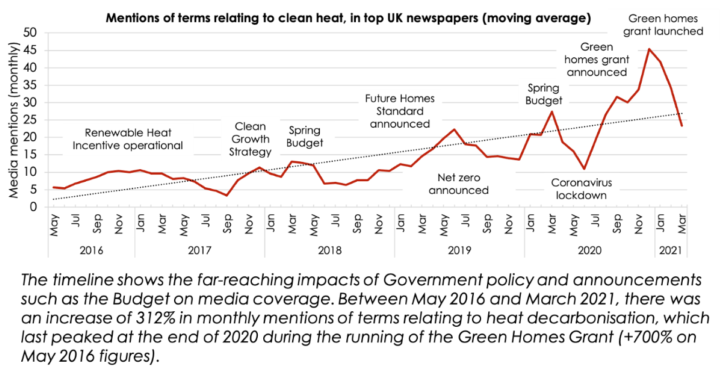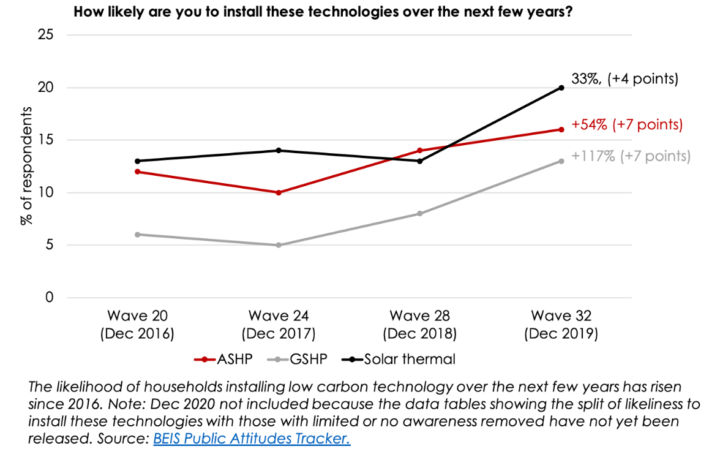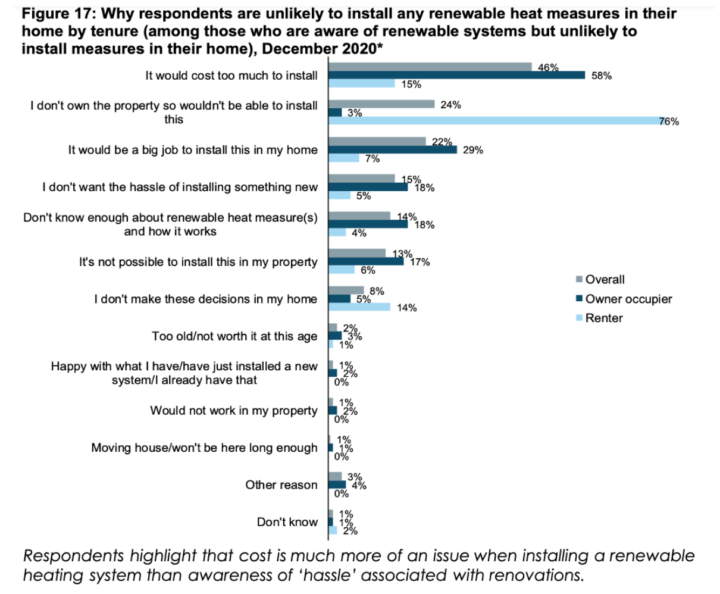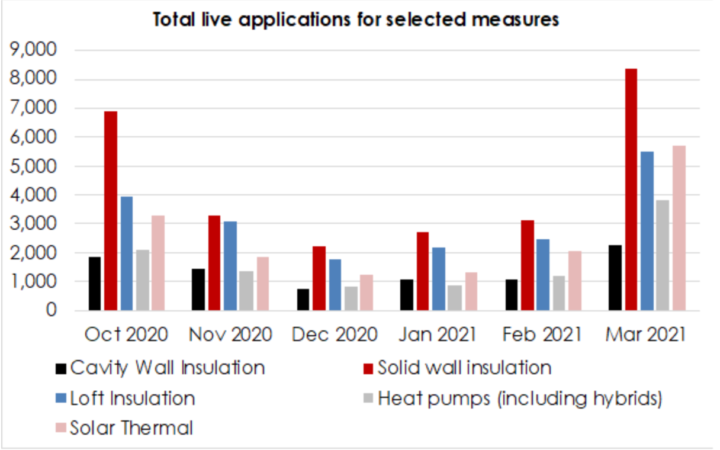Public warming up to eco-heating
It is a question of when, not if, the clean heat revolution will begin.

By Jess Ralston
@jessralston2Share
Last updated:
Once upon a time, the narrative surrounding energy and climate change was highly charged. Onshore wind was ‘hated’, energy bills were seemingly infinitely rising and condensing boilers – way more efficient and the primary choice for UK households now – were touted as ‘malfunctioning easily’ with ‘nightmarish bills’.
Of course, the bulk of these stories have now been proven to be simply that – stories.
Yet today, the move to clean heat is unfairly getting a similar reputation. Despite actually being keen to do their bit – two-thirds of Brits believe that climate change is as serious as the pandemic and want to see climate prioritised in the economic recovery – headlines falsely suggest voters are overwhelmingly attached to their boilers and would resist a move that would see their homes become healthier for themselves and for the planet.
This gives government a clear excuse to delay and dampen bold action on our homes. However, the data actually suggests the public’s attitude for change is growing and with it so will the way we heat our buildings, an area in focus for policy makers right now.
Low but growing
For example, a recent Sunday Times feature on home heating received the most website hits – surpassing coverage of the Royal Funeral even. Combined with steady increases in mentions clean heat terms in the media, interest in switching to greener heating is clearly on the rise.

Perhaps that’s no surprise. The readily available alternative, heat pumps, are actually more than three times more efficient than gas boilers, giving savvy homeowners way more bang for their buck than they currently get.
Moreover, heat pumps have fewer moving parts so are less likely to break down – a blessing for the one in five gas boiler owners who experienced this during 2017.
They also last up to a decade longer, meaning it’s no wonder that 15% of people are considering installing low carbon heating over the next few years. Although only up 7 percentage points overall, this figure has more than doubled since 2016, a sure sign of the direction of travel.

Applying this 15% ratio to the whole UK population and assuming 65% are owner occupiers capable of installing heat pumps, 6.63m heat pumps could be in homes by 2025 – in other words, 1.9m per year from today. This is stark considering the UK government’s target for heat pumps is just 600,000 per year by 2028.
Making this switch viable could even prevent one-and-a-bit years’ worth of gas boiler installs, currently around 1.6m per year.
However, the reality is that those willing to swap out their gas-guzzling boilers for carbon-friendly options simply don’t have the policy support. And while targets are always a helpful signal to the market, a plan for delivery and suite of policies well beyond is yet to be seen – something the ‘imminent’ Heat and Buildings Strategy is set to provide.
Cost, not understanding, is the main barrier
Pretty much the only such policy announced to date is the Clean Heat Grant, set to come into effect in 2022. Despite noble intentions, government figures show the £4,000 lump sum to help cover the costs of heat pumps is only expected to support a measly 25,000 installations from 2022-24, government figures show, simply nowhere near enough to meet ambitions. In that case, expect this to be beefed-up in the upcoming Strategy.
With cost being the biggest hurdle to jump of all – nearly two-thirds of homeowners cite this as an issue – it’s obvious that public awareness (just 14% of those surveyed pointed to ‘not knowing enough about renewable heat’ as a reason for not taking the plunge) is not holding things back.

Crucially, there are many things that can be done about cost. Some are already thriving, like Octopus Energy committing to nearly halving the costs of heat pumps within the next 18 months. Combine this with the grant available from next year, and a completely clean heating system will cost the same as a gas boiler today.
On the consumer end, zero or low interest loans and tax incentives could play a role in financing net zero heat. Eventually a regulation like completely phasing out fossil fuel boilers in 2032 or 2035 (backed by 9 in 10 at the Climate Assembly) could secure the move from the less willing.
It should not have to come to this, however, if the right public awareness campaign and incentives are utilised. Luckily, the government has already promised to ‘increase public confidence in heat pump technology’ – we can look forward to that, then.
Facts on the ground
Data on applications made for Green Homes Grant vouchers also shows a keenness to move to clean heat. Of the 132,483 applications, 24,526 were for heat pumps or solar thermal heating systems – 19% of the total.
This makes them the fourth and fifth most popular primary measures applied for, respectively.

If the full Green Homes Grant had been realised, at March rates of popularity over 40,000 heat pumps could have been installed in homes over the next year – already 5,000 more than were sold in 2019. However, the actual number installed is likely to be limited to around 5,000 as the scheme was pulled with nothing to replace it. Similarly, the number of solar thermal installations could have been a whopping 63,000 in the full scheme, but only a skimpy 16,000 actually transpired.
A replacement for the Green Homes Grant is a minimum short-term requirement of the Heat and Buildings Decarbonisation strategy, policy makers may want to learn from the enthusiasm for low carbon heating systems when finessing a successor.
Revolution incoming
Despite the existing narratives on clean heat, the message is becoming clearer. Albeit from a low base, awareness is rising and so is acceptability. It’s already a question of when, not if, the clean heat revolution will begin but action on the ground is surely incoming, and at pace.